The Fairchild House Site
Introduction
Text-to-speech Audio
Images
Fairchild Home Historic site marker.
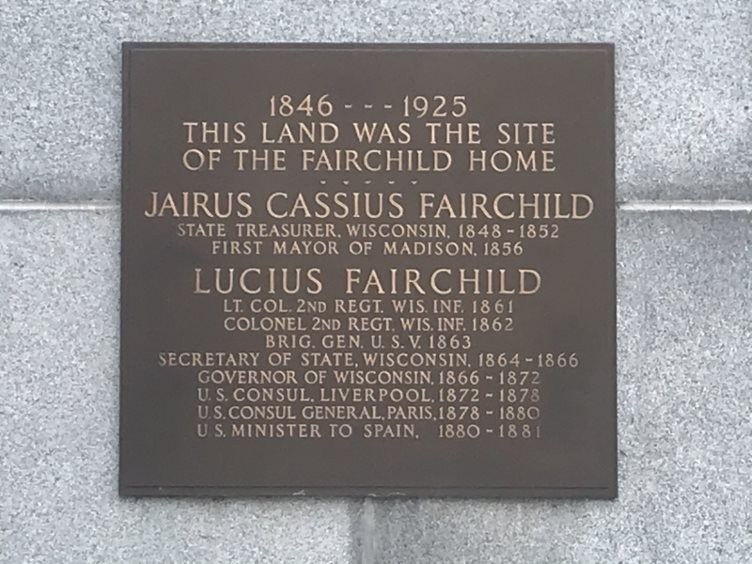
Group photograph: “Three heroes of the Iron Brigade: Lucius Fairchild, [seated left] Edward S. Bragg [standing], and John Gibbon [seated right]”, probably taken during the 1885 Iron Brigade Association Reunion in Madison, WI.
![Group photograph: “Three heroes of the Iron Brigade: Lucius Fairchild, [seated left] Edward S. Bragg [standing], and John Gibbon [seated right]”, probably taken during the 1885 Iron Brigade Association Reunion in Madison, WI.](https://storage.googleapis.com/clio-images/medium_1114_Mss2007.148.I002_300.jpg)
Carte-de-visite full-length portrait photograph of Lucius Fairchild. He is shown seated in uniform with a forage cap resting on a table.
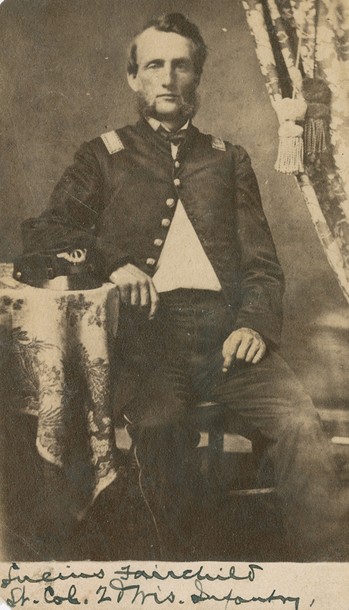
Photograph of Major and Governor of Wisconsin, Lucius Fairchild. The photograph was taken several years after his left arm was amputated from a wound received during the Battle of Gettysburg.
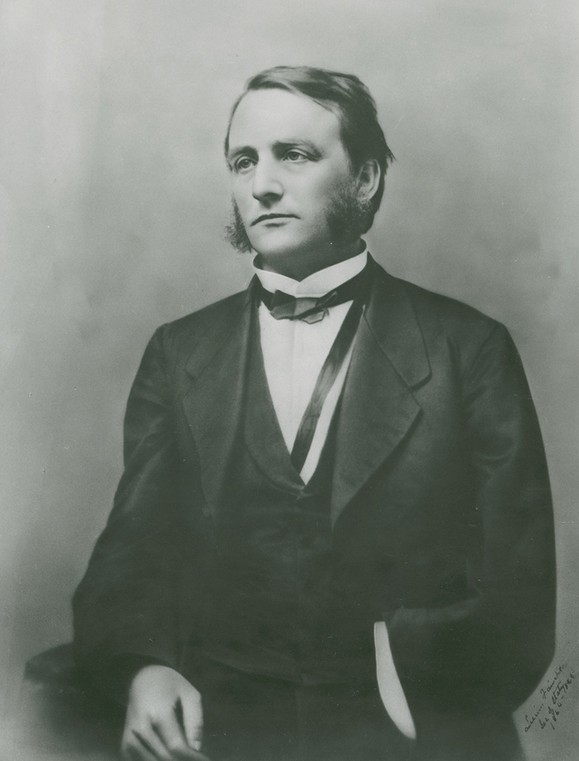
Bust portrait photograph of Cassius Fairchild. He is shown wearing a double-breasted officer's coat with shoulder straps.
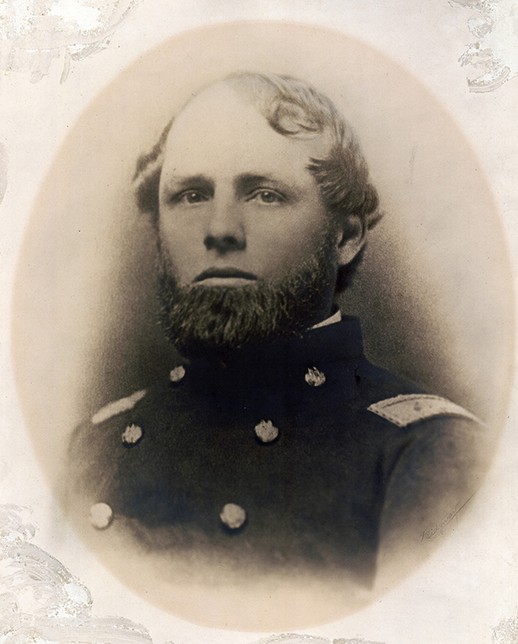
A carte-de-visite, full-length portrait photograph of Cassius Fairchild. He is shown wearing a dress uniform with cap and a cloak.
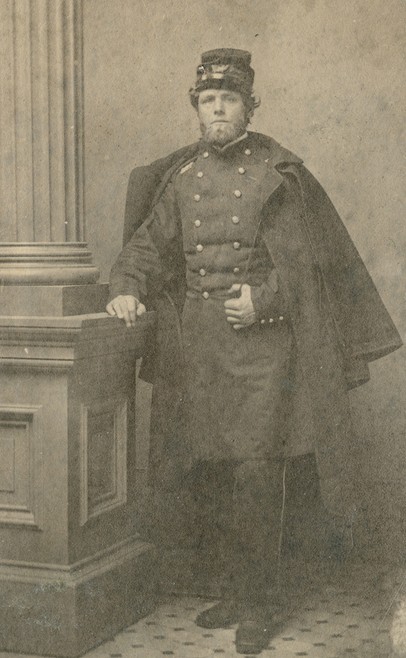
Backstory and Context
Text-to-speech Audio
The Fairchild house was finished in 1850 and became a focal point of Madison’s political and social circles during his time as state treasurer and mayor. Along with the liveliness around the house created by his political career, Fairchild and his wife, Sally, had four children to care for in Madison, although the Fairchilds had five children all together. There were four boys in the family; James, Cassius, Lucius, and Charles; and one girl, Sarah. Sadly, James had passed long before they move to Madison. Jairus, as well, would fall ill and die in 1862, just as his remaining children were entering their adult years.
All three of his sons fought in the Civil War. Cassius began his service with the 16th Wisconsin Volunteer Infantry and would close out the war as a brevet brigadier general in the Army of the Tennessee. He was wounded at the Battle of Shiloh and was sent back to Madison to recover from his wounds, where he convalesced in the adjoining room to his terminally ill father. Lucius was assigned to the 2nd Wisconsin Volunteer Infantry and would eventually attain the rank of brigadier general in the Army of the Potomac. He suffered a gunshot to the left arm during the Battle of Gettysburg, resulting in the amputation of that limb. Charles would serve as paymaster for the Union Navy and was one of less than 100 men from Wisconsin to serve in the Navy. Sarah would later marry a University of Wisconsin professor.
After the war, Lucius took over the family estate and it served his political ambitions as well as it did his father's. As governor of the state from 1866 to 1872, Lucius used the Fairchild home as the state’s executive residence, since the state did not possess a governor’s mansion at the time. After his terms as governor, Lucius would leave the family home as he was appointed consul to Liverpool and Paris, and later becoming Commander-in-Chief of the Grand Army of the Republic. Although the Fairchild house no longer stands, the legacy of the Fairchilds continues to be told throughout Madison and Wisconsin.
Sources
“Jairus Cassius Fairchild” History of Dane County, 1880. Online. Accessed 26 May 2020. http://www.secondwi.com/wisconsinpeople/jairus_cassius_fairchildwas_born.htm
“Jairus Cassius Fairchild: History of Dane County, 1880”
“Fairchild, Col. Cassius (1829-1868): Wisconsin Civil War Officer, U.S. Marshall, Business Owner.” Wisconsin Historical Society. Online. Accessed 21 May 2020. https://www.wisconsinhistory.org/Records/Article/CS3266
Ross, Sam (1955). A biography of Lucius Fairchild of Wisconsin. Madison, Wisconsin: University of Wisconsin--Madison. pp. 9, 16–18.
Ross, Sam (1964). The Empty Sleeve: A Biography of Lucius Fairchild. Madison, Wisconsin: State Historical Society of Wisconsin for the Wisconsin Civil War Centennial Commission. pp. 1–55.
Olson, Michael G. Fairchild Home Historic Site Marker. May 26, 2020, Madison.
Iron Brigade Association, Mss2007.148. Wisconsin Veterans Museum (Madison, Wis).
Grand Army of the Republic Memorial Hall Records, [ca. 1861]-1978, (bulk 1904-1965) WVM Mss 4. Wisconsin Veterans Museum (Madison, Wis).
Lucius Fairchild, Papers and photographs, 1866-1904, WVM Mss 304. Wisconsin Veterans Museum (Madison, Wis).
Lucius Fairchild, Papers and photographs, 1866-1904, WVM Mss 304. Wisconsin Veterans Museum (Madison, Wis).
Grand Army of the Republic Memorial Hall Records, [ca. 1861]-1978, (bulk 1904-1965) WVM Mss 4. Wisconsin Veterans Museum (Madison, Wis).
